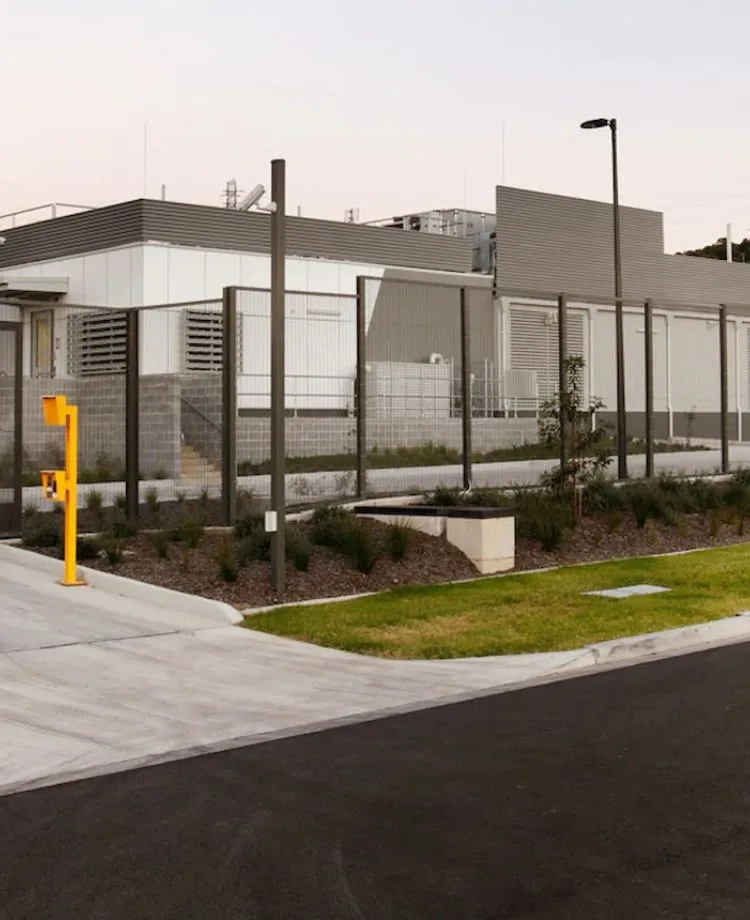The Growing Importance of Physical Security
Data centres serve as the backbone of Australia’s digital infrastructure, housing critical information, cloud services, and high-value assets for both commercial and government clients. Protecting these facilities against unauthorised access is essential, and securing the entry points with a data centre gate combined with supplementary physical barriers such as anti-ram systems and bollards provides a robust solution to mitigate security risks and safeguard sensitive operations.
Understanding Anti-Ram Barriers
Anti-ram barriers are engineered structures designed to prevent vehicles from breaching critical entry points. They are particularly important for data centres located in high-traffic urban areas, transport corridors, or isolated government facilities. By controlling vehicle access, these barriers protect against theft, vandalism, and potential sabotage.
Key types of anti-ram barriers include hydraulic rising bollards, wedge barriers, and crash-rated systems. Each is designed to absorb or resist impact from heavy vehicles, ensuring that unauthorised vehicles cannot penetrate the perimeter. For commercial operators, installing anti-ram systems around entry points enhances overall site security without disrupting operational flow.
Bollards as a Complementary Measure
Bollards are short, sturdy posts positioned to regulate traffic and protect critical infrastructure. When installed alongside the entry, they prevent accidental or deliberate vehicle collisions while maintaining pedestrian access and emergency vehicle pathways.
Modern bollards are often crash-rated and can be integrated with rising or retractable mechanisms to allow authorised vehicles through while maintaining an uncompromising security posture. By carefully placing bollards at strategic intervals, facility managers can create a protective buffer zone that discourages high-speed attacks or unauthorised entry.
Design Considerations for Data Centre Security
The design of anti-ram barriers and bollard systems must align with the unique needs of each site. Factors such as traffic volume, gate configuration, surrounding landscape, and emergency access requirements all influence the final layout.
Government facilities with strict compliance standards require systems that meet defined crash ratings, ensuring that barriers can stop vehicles of various weights and speeds. Commercial data centres may prioritise flexibility to accommodate frequent deliveries and maintenance vehicles while still maintaining a high level of security.
In both cases, careful planning ensures that the barriers integrate seamlessly with access control systems and surveillance technologies.
Integration with Access Control Systems
A secure perimeter is not just about physical barriers. Combining anti-ram barriers and bollards with electronic access control systems provides a multi-layered defence strategy.
Key integration options include:
-
Keycard or biometric access at gates
-
Automatic bollard raising for authorised vehicles
-
Real-time monitoring of barrier status via surveillance cameras
-
Alarm notifications for unauthorised attempts
These integrations improve operational efficiency while maintaining stringent security standards, allowing facility managers to monitor and control all points of entry in real time.
Durability and Maintenance
Given the high-risk nature of data centre perimeters, durability is a critical consideration. Anti-ram barriers and bollards must withstand harsh weather, repeated impacts, and operational wear over extended periods.
Hydraulic and mechanical systems should be designed for long-term use, with minimal downtime for maintenance. Routine inspections and servicing are necessary to ensure optimal performance, particularly in government sites where security standards are strictly enforced. By investing in robust, low-maintenance solutions, operators can reduce lifecycle costs while maintaining consistent protection.
Site-Specific Customisation
Every data centre is unique, and the placement of anti-ram barriers and bollards should reflect site-specific conditions. Factors to consider include:
-
Entry width and traffic volume
-
Proximity to public roads or delivery zones
-
Emergency access routes and evacuation requirements
-
Integration with fencing and perimeter walls
Customised solutions ensure that the barrier system enhances security without impeding operational functionality. This balance is especially important in commercial hubs and government infrastructure projects where efficiency and safety are both top priorities.
Compliance and Safety Standards
Commercial and government data centres must comply with local building codes, occupational health and safety regulations, and relevant security standards. Selecting anti-ram and bollard systems that meet established crash-rating certifications ensures legal compliance while providing demonstrable protection against unauthorised vehicular access.
Compliance also supports risk management, reducing the likelihood of operational disruption, liability claims, or regulatory penalties.
Enhancing Operational Security
When combined with a secure entryway, anti-ram barriers and bollards provide an effective deterrent against threats. They protect high-value equipment, staff, and visitors while enabling controlled access for authorised vehicles.
This layered security approach is particularly beneficial for sites handling sensitive government data, critical infrastructure, or commercial assets where breaches could result in significant operational and financial impacts.
Investing in anti-ram barriers and bollards alongside a secure data centre gate is essential for any high-risk commercial or government facility. By integrating physical barriers with access control, monitoring systems, and site-specific design, operators can ensure long-term protection, regulatory compliance, and operational efficiency. These solutions represent a critical component of modern data centre security strategies, safeguarding both assets and reputation while mitigating potential risks. Additionally, well-planned barrier systems enhance emergency response capabilities, streamline authorised vehicle access, and provide peace of mind to stakeholders responsible for critical infrastructure management.


